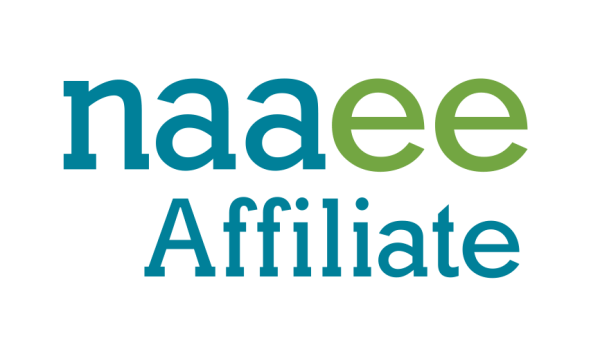Growing & Strengthening the NAAEE Affiliate Network- Executive Summary

Growing and Strengthening the Network
Executive Summary
Across North America, state, provincial, territorial and regional environmental education associations are supporting the many types of educators who teach concepts we all need to understand: how natural systems work, what we must do to interact responsibly with our environment, and how we can protect natural resources for future generations. These associations, when linked together through the NAAEE Affiliate Network, create an extensive circuitry of programs, initiatives, and supports to energize environmental education across the continent. These network connections, allow ideas, learnings, and successes to flow across the network powering ongoing innovation.
The NAAEE Affiliate Network is part of the largest network of environmental educators in the world, connecting us to over 150,000 educators annually. Collectively, we support educators, schools, and communities to impact conservation, education, social justice, health and wellness, and youth development.
The Affiliate Network has grown in capacity over the past 5 years. The number of Affiliate Organizations with paid staff has more than doubled. And NAAEE has increased its investments in supporting individual Affiliates and the network through capacity building initiatives such as ee360 and staffing dedicated to Affiliate Network activities. To continue innovating and increasing representation and transparency, in fall 2020, an NAAEE Affiliate Network 2.0 working group was established and resourced with a facilitation team to conduct a collaborative three-month design sprint imagining 2021 and beyond. That design sprint produced drafts of the following:
#1 New Network Goals
“The NAAEE affiliate network advances environmental literacy to create a more equitable and sustainable future. As a network, we collaborate on joint efforts and share learning in order to:
- Build the capacity of individual NAAEE affiliates, NAAEE, and the affiliate network to advance the field of Environmental Education
- Increase equity and inclusion in Environmental Education through initiatives at individual NAAEE affiliates, NAAEE, and the affiliate network
- Reach more people and increase support for EE through joint Advocacy and Messaging
- Advance additional efforts to be a just, effective, and innovative network as they emerge”
The group also suggested a recurring process for moving these goals to execution and more detail.
#2 Ecosystem Mapping
The working group developed an ecosystem map design that can be used to map the full network in 2021. An ecosystem map can be a helpful tool to visualize entities and relationships within our network and will help the network prioritize work by addressing gaps in the map and leveraging areas of strong interconnection. The ecosystem map design includes:
- A digital, interactive ecosystem map based on the available sample of the affiliate network with multiple views (including both a stakeholder and geographic view)
- Google Spreadsheets integrated with the map
- Data Dictionary & instructions for gathering/integrating data on the whole network
- Sample interpretation of the affiliate network’s alignment to the four network goals
#3 Body and Process for Network Collaboration
Seeking to increase representation and transparency while still supporting higher-capacity NAAEE affiliates’ voluntary contributions to the affiliate network, the working group outlined a single inclusive cadence of network collaboration meetings with two levels of involvement that will replace the previous Affiliate Network Steering Committee:
- An Advisory Group that is more broadly representative with lower commitment (~3 mtgs/yr)
- A Working Group of a smaller number of affiliates with additional capacity (monthly mtgs)
#4 Next Steps
The working group and facilitation team identified next steps and learnings, including:
- Seek network-wide feedback on these drafts in Q1 of 2021. There will be multiple opportunities for sharing your feedback throughout February and March.
- Continue the current working group through Q1 to help spread the word and hear feedback, and make adjustments as needed. Launch the new working group and advisory council in Q2 of 2021.
- Continue the work of soliciting data and building the Affiliate Network Ecosystem Map in Q3 & Q4 of 2021
- Focus more externally on listening to the network and innovating to serve them
To read the full report on the above strategies and next steps, visit the attached files. For any questions about the Affiliate Network, Affiliate Network Working Group or the report itself please contact Bruce Young (Affiliate Network Coordinator), Sarah Bodor (Director of Advocacy & Affiliate Relations), or Katie Navin (Affiliate Network Working Group Co-Chair)